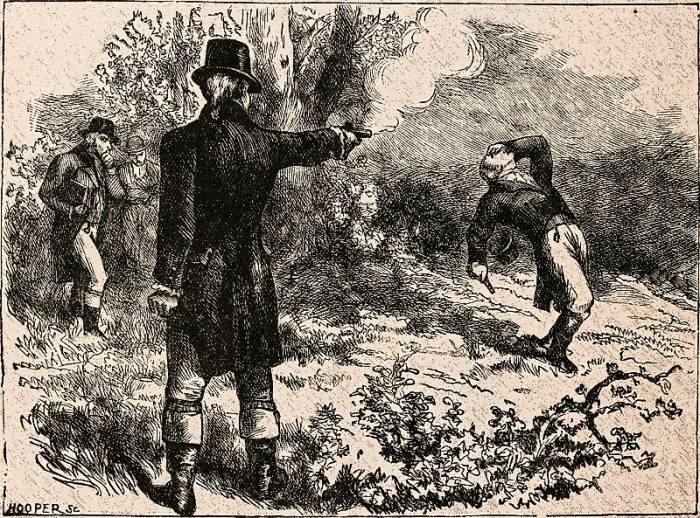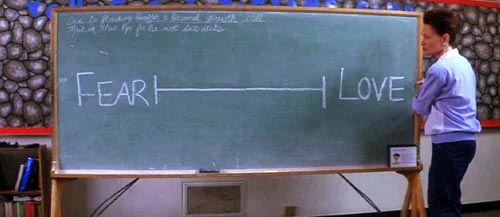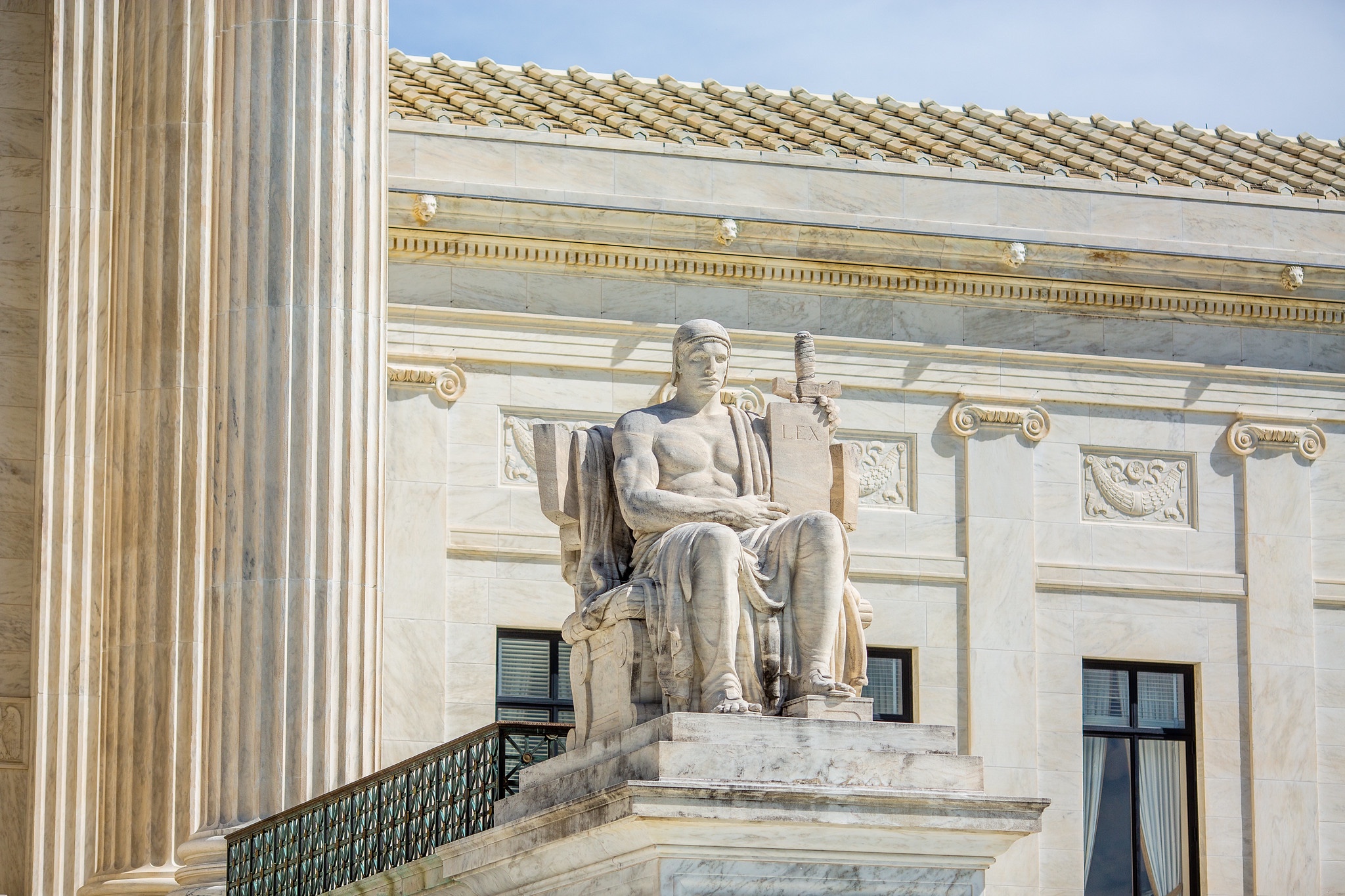Two firearms-related SCOTUS rulings, one featured their
first major application of the Bruen test.
Cargill

|
/u/Remote_Special_7050
What stocks are the most damaging to humanity? I'm going to buy one to ensure the price drops!
|
|

|
/u/whg115
Well now, its bump stocks thanks to the supreme court
|
This
is the one questioning whether the federal machine gun ban applies to the accessory that enables automatic-like fire using recoil, made famous by the Las Vegas mass shooting. I didn't read the opinion but
the gist seems to be that the court took a literal view of the terminology used in the 1930s statute rather than the government's more expansive view of what "function of the trigger" means. That's probably the textualist view whereas an originalist putting their Capone-era regulatory hat on might decide that the intention was to ban high fire rate weapons.
Anyway, it's up to Congress to fix.
Rahimi
Cargill was pretty straight forward.
Rahimi was not, largely becuase it was the first test of
Bruen's "histories and traditions" neo-originalism criterion.
There's a lot more in this decision than you'd expect from the decisive 8-1 final score. For one, Justice Thomas (who wrote the
Bruen opinion) dissented. Had the rest of the court not understood his test? The liberal justices wrote concurring opinions, stating their agreement with the rationale and disagreement with originalism (no surprises there).
In the majority opinion and some of the concurrences,
the conservative justices seemed to put in serious work to save the idea of "histories and traditions" while upholding Rahimi's disarmament:
- Gorsuch attacked the precursor means-end test to help justify the court's new direction.
- Kavanaugh rambled at length about originalism, trying to provide insight into the court's process while more or less calling Justice Scalia the greatest American in history.
- Roberts underscored the malleability of the test, showing that it indeed would permit the temporary disarmament of a domestic abuser and public discharge enjoyer. He admonished the lower courts for failing to understand The SCOTUS Vision[TM].
- Alito was nowhere to be found. A little bit strange. Perhaps even a red flag.
Historical analogues (not twins!)
The majority opinion, penned by the Chief Justice,
essentially said that historical analogues to 922(g)(8) do exist and that the facial challenge (max difficulty level) makes it a slam dunk:
 Majority Opinion
Majority Opinion |
The Fifth Circuit erred in reading Bruen to require a "historical twin" rather than a "historical analogue." The panel also misapplied the Court's precedents when evaluating Rahimi's facial challenge. Rather than consider the circumstances in which Section 922(g)(8) was most likely to be constitutional, the panel instead focused on hypothetical scenarios where the provision might raise constitutional concerns.
|
The historical analogues:
- Surety laws - more or less a civil escrow/insurance system against bad behavior. In the founding era someone could ask the judge to require a person to put up money that they would lose if they subsequently broke the law.
- "Going armed" laws - if someone had been convicted of something minor, they could be prevented from taking firearms in public.
 Majority Opinion
Majority Opinion |
[W]ives [could] demand [sureties] against their husbands; or husbands, if necessary, against their wives." These often took the form of a surety of the peace, meaning that the defendant pledged to "keep the peace."
|
I'm mildly curious about the history of these. It seems like a weird and dark
scenario where someone abuses their spouse and the solution is for the offender to put up a bond and continue cohabitating. Perhaps this is why (functionally) no one had ever heard of them until now. The opinion mentions the sureties being used in a preventative/proactive way. At least that kind of makes sense, e.g. an arrangement that is kind of like a prenup demanded by the father of the bride.
 Majority Opinion
Majority Opinion |
Our tradition of firearm regulation allows the Government to disarm individuals who present a credible threat to the physical safety of others.
|
The
Bruen test was indeed explicit that it didn't demand a historical twin but there was no shortage of confusion on
exactly how analogous the analogue must be. Per Roberts (and perhaps only Roberts), the statute must only find a predecessor that matches "the principles that underpin our regulatory tradition". And here the court found that protective orders are similar, in principle, to surety laws and going armed laws.
Responsible
 Majority Opinion
Majority Opinion |
We reject the Government's contention that Rahimi may be disarmed simply because he is not "responsible." "Responsible" is a vague term. It is unclear what such a rule would entail. Nor does such a line derive from our case law. In Heller and Bruen, we used the term "responsible" to describe the class of ordinary citizens who undoubtedly enjoy the Second Amendment right. But those decisions did not define the term and said nothing about the status of citizens who were not "responsible."
|
This seemed rather harsh when I read it; my takewaway from oral arguments was that the government acknowledged that "responsible" wasn't a clearly-defined term but it was the word the court used in
Bruen.
 Solicitor General Prelogar
Solicitor General Prelogar |
Like Heller and McDonald, Bruen recognized that Congress may disarm those who are not law-abiding, responsible citizens... Throughout our nation's history, legislatures have disarmed those who have committed serious criminal conduct or whose access to guns poses a danger, for example, loyalists, rebels, minors, individuals with mental illness, felons, and drug addicts.
|
Seems like "responsible" is a reasonable and succinct stand-in for "those who are not loyalists, rebels, minors, the mentally ill, felons, and drug addicts" and that's why SCOTUS used it to describe "ordinary citizens who undoubtedly enjoy the Second Amendment right". I didn't get from oral arguments that the Solicitor General was offering a finite classification scheme or objecting to the idea that the court might provide it. It probably could have been addressed with some dictum rather than a vehement rejection.
The liberal justices
Justice Sotomayor wrote a separate concurring opinion, joined by Justice Kagan, that essentially said "I don't agree with
Bruen but I agree with the conclusion and that the histories and traditions criterion is satisfied (but it sucks)."
Justice Jackson's concurrence listed/quoted a ton of lower court decisions that expressed confusion over the originalism test. The DoJ's
subsequent filing was basically "yeah, this". Specifically, in the lower courts 922(g)(1) has a lot of pending challenges and circuit splits and legal mayhem.
922(g)(1) covers convicted felons, so one would presume this is a slam dunk after the court found protective orders sufficient for disarmament. On the other hand, felonies include white collar crimes which may not align with historical principles. Damn these cliffhanger season finales!
The (concurring) conservative justices
 Justice Gorsuch
Justice Gorsuch |
But if reasonable minds [referring to Thomas] can disagree whether §922(g)(8) is analogous to past practices originally understood to fall outside the Second Amendment's scope, we at least agree that is the only proper question a court may ask.
|
This is some top-tier passive aggressiveness. "Alito, Roberts, Kavanaugh, and I disagree with Thomas's conclusion - perhaps because rearming wife/husband/child abusers is a bad look - but we agree that the originalism test is unambiguously correct. Sotomayor, Kagan, and Jackson are not reasonable minds because they don't agree. Nor are most of the Supreme Court justices of the last fifty years. Barrett might be, not quite sure about her right now."
Regarding the alternative to originalism,
before Bruen the historical Second Amendment test was a means-end balancing of civil rights and social impact.
Gorsuch then says, essentially, "This was a facial challenge, don't read too far in to the decision!" And that tracks with the agenda set out by
Bruen - that the court wants the chance to re-evaluate old decisions based on their new test.
Justice Kavanaugh follows Gorsuch with a longwinded attempt at reassuring his countrymen that originalism is the indeed the only choice for "reasonable minds". He begins by addressing the
comment sections of the world where it is not uncommon to find the phrase "shall not be infringed" used as the Omega Reverse Uno Trump Card that defeats all gun control. Kavanaugh confesses that the Constitution is sometimes very precise and sometimes not but that it certainly does allow restrictions on the First and Second amendments. And then:
 Justice Kavanaugh
Justice Kavanaugh |
In many cases, judicial precedent informs or controls the answer (more on that later). But absent precedent, there are really only two potential answers to the question of how to determine exceptions to broadly worded constitutional rights: history or policy. Generally speaking, the historical approach examines the laws, practices, and understandings from before and after ratification that may help the interpreter discern the meaning of the constitutional text and the principles embodied in that text. The policy approach rests on the philosophical or policy dispositions of the individual judge. History, not policy, is the proper guide.
|
Ah yes. Decisions are either political or historical or some combination thereof. And historically, decisions were made politically (especially the means-end test!) so there's the risk that historical guides might also be political, but we shouldn't think about that. Nor should we consider how so many historical decisions were inseparable from injustices that were only later solved by political means.
Regardless, Kavanaugh presents something that seems an awful lot like a false dilemma; surely there are more axes upon which to evaluate a question of law. Another possibility (that is not mutually exclusive) is that this is basically, "they're going to say we are political, but
as you see from this diagram historical is the opposite of political, so checkmate".
 Justice Kavanaugh
Justice Kavanaugh |
The balancing tests (heightened scrutiny and the like) are a relatively modern judicial innovation in constitutional decisionmaking. The "tiers of scrutiny have no basis in the text or original meaning of the Constitution."
|
Kegstand Kavanaugh wagging his finger at the last fifty years of constitutional jurisprudence is ambitious. This is, of course, not my area of expertise so
I decided to reread the section of Article III that covers judicial review to see how it said decisions should be made. To my surprise, the text of Article III doesn't even mention judicial review, much less how it should be done.
 Justice Kavanaugh
Justice Kavanaugh |
To be clear, I am not suggesting that the Court overrule cases where the Court has applied those heightened-scrutiny tests.
|
Lol.
You just said the previous decisions did not use "the proper guide". Why wouldn't you re-examine those decisions that impact our civil liberties? I hope it's not for policy reasons like "being too much work" or "risks unintended consequences".
Finally, Justice Barrett's separate concurrence reiterates the "exact twin" grievance and quietly offers a pretty strong critique of originalism. Since I first read it in an NYT editorial, I'll quote that even though it's mostly Barrett's words:
 David French
David French |
Barrett put her objections well. "Imposing a test that demands overly specific analogues has serious problems," she wrote. "It forces 21st-century regulations to follow late-18th-century policy choices, giving us 'a law trapped in amber.' And it assumes that founding-era legislatures maximally exercised their power to regulate, thereby adopting a 'use it or lose it' view of legislative authority."
|
The Thomas dissent
Justice Thomas was the sole voice of dissent, arguing that Zackey Rahimi and everyone else subject to a protective order should indeed be permitted access to firearms. And
if you take the originalism test to be "the only proper question", I think he's right.
 Justice Thomas
Justice Thomas |
The Government points to an assortment of firearm regulations, covering everything from storage practices to treason and mental illness. They are all irrelevant for purposes of §922(g)(8). Again, the "central considerations" when comparing modern and historical regulations are whether they "impose a comparable burden" that is "comparably justified."
|
Thomas disagrees with the government and with the rest of the court on the applicability of surety and going armed laws to 922(g)(8), primarily because
the penalty in Rahimi is the temporary loss of a core civil liberties rather than something less severe. This concept draws upon notions of intermediate and strict scrutiny when considering regulatory impact on civil rights.
Per Justice Thomas,
while surety laws were preventative justice, they didn't take away rights. In the case of going armed laws, the disarmament did not apply to firearms kept in the house so the subject's Second Amendment rights were only partially impacted (in the post-
Heller world).
Icing on the cake
Justice Thomas's dissent is not short, there's all sorts of ranting about the British and Episcopalians and such (going armed laws are a British thing, though, per Roberts, various US states adopted them).
The Thomas opinion blesses us with the obligatory slippery slope from Rahimi to authoritarianism. And then there's, "let's just bring sureties back":
 Justice Thomas
Justice Thomas |
Evidence suggests that sureties were readily available. Even children, who "[we]re incapable of engaging themselves to answer any debt," could still find "security by their friends." There is little question that surety laws applied to the threat of future interpersonal violence. "[W]herever any private man [had] just cause to fear, that another w[ould] burn his house, or do him a corporal injury, by killing, imprisoning, or beating him . . . he [could] demand surety of the peace against such person."
|
From the originalism standpoint, it's difficult to argue with that. Well,
perhaps sureties worked then. Or they may have been a disaster. Or only useful to wealthy socialites seeking a prenup-like arrangement in the days before background checks. But originalism doesn't require that they were excellent, it only requires that they existed.
 Justice Thomas
Justice Thomas |
In addition, to argue that a law limiting access to firearms is justified by the fact that the regulated groups should not have access to firearms is a logical merry-go-round.
|
Frustratingly, he omitted a citation for this.
 Justice Thomas
Justice Thomas |
Heller considered the District of Columbia's "flat ban on the possession of handguns in the home," and Bruen considered New York's effective ban on carrying a firearm in public. The Court determined that the District of Columbia and New York had "addressed a perceived societal problem-firearm violence in densely populated communities-and [they] employed a regulation . . . that the Founders themselves could have adopted to confront that problem." Accordingly, the Court "consider[ed] 'founding-era historical precedent' " and looked for a comparable regulation. In both cases, the Court found no such law and held the modern regulations unconstitutional.
|
Originalism is a double-whammy here. Not only has technology allowed firearms to become more lethal, any innovations that might prevent misuse of them are - per
Bruen - unconstitutional. Since the founders didn't use biometrics to ensure it's your firearm and you're not intoxicated, nobody can.
 Justice Thomas
Justice Thomas |
Assuming C. M.'s allegations could be proved, Texas could have convicted and imprisoned Rahimi for every one of his alleged acts.
|
They sure could.
Some posts from this site with similar content.
(and some select mainstream web). I haven't personally looked at them or checked them for quality, decency, or sanity. None of these links are promoted, sponsored, or affiliated with this site. For more information, see
.









